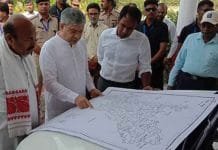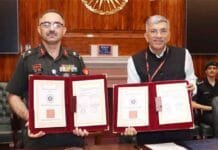A Landmark Decision for India’s Social Landscape
INVC NEWS New Delhi – In a historic policy shift, the Union Cabinet of India has officially approved the inclusion of caste-based enumeration in the upcoming national census. This decision is set to change the way India’s government addresses social inequality, resource allocation, and governance, providing a detailed snapshot of India’s diverse social fabric.
For decades, the question of caste representation has sparked debate, and now, as part of the 2025 Census, India is ready to gather comprehensive data that could have far-reaching effects on education, employment, and reservation policies across the nation.
Union Minister’s Announcement: What You Need to Know
At a press conference on Tuesday, Ashwini Vaishnaw, Union Minister for Electronics and Information Technology, made the announcement:
“The Union Cabinet has approved the inclusion of caste data in the national census. This will help in forming policies based on solid evidence and provide the necessary insights for inclusive growth across India.”
The decision comes after years of calls from various political parties, social activists, and regional leaders who have long demanded the inclusion of caste in national data collection. The government has emphasized that this process will be transparent, scientifically rigorous, and will uphold data integrity at every stage.
The Historical Context: Why Now?
India’s last comprehensive caste census was conducted in 1931 during British rule. Since then, caste data has been largely absent from national censuses, despite the fact that caste continues to play a central role in social, political, and economic life in India.
The 2011 Socio-Economic and Caste Census (SECC) made an attempt to gather caste-related data but was marred by controversies and technical challenges, leaving the information largely inaccessible. Now, with advancements in technology and a growing need for accurate social data, the inclusion of caste data in the 2025 Census is seen as a crucial step forward.
What Does This Mean for India’s Policy and Governance?
The approval to include caste in the national census could be a game-changer for India’s governance. Here’s why:
Targeted Welfare Programs: The government will have access to precise data on caste-based socio-economic conditions, allowing for more effective targeting of welfare schemes, including food distribution, healthcare, and financial aid.
Educational and Employment Quotas: The census data will offer clarity on the distribution of resources and make it easier to assess the need for reservation policies in education and public sector jobs.
Inclusive Growth: By acknowledging caste data, India’s policymakers can craft programs that ensure resources and opportunities are distributed based on need, rather than assumptions.
This data will also provide the government with a clearer picture of the Other Backward Classes (OBCs) and other marginalized groups, which has been a challenge in the past due to lack of accurate and updated figures.
Political Implications and Reactions
The inclusion of caste in the 2025 Census is a bold political move with significant implications. The decision is widely seen as a response to years of pressure from opposition parties, particularly the Congress Party, and regional governments, most notably in states like Bihar, Tamil Nadu, and Uttar Pradesh.
Rahul Gandhi, leader of the Congress, welcomed the decision, calling it a step toward social justice that will empower millions of marginalized Indians.
Bihar Chief Minister Nitish Kumar, who has long advocated for caste enumeration, praised the decision, calling it “a victory for the oppressed.”
On the other hand, some BJP leaders have expressed caution, arguing that while caste data will help target welfare programs, it should not be used to deepen divisions or inflame social tensions.
In a country as diverse as India, the political ramifications of caste-based data are bound to be far-reaching. It remains to be seen how this data will be used to influence future elections, social policies, and party strategies.
Challenges Ahead: Data Collection and Privacy Concerns
Though the decision has been widely praised, the implementation of caste-based enumeration on a national scale will be complex. With a population exceeding 1.4 billion, accurately collecting and categorizing caste data is no small feat.
The Indian government has promised to use digital tools and modern data management systems to ensure accurate collection and security of sensitive information. However, experts have raised concerns about:
Classifying Castes: India is home to over 6,000 castes, and categorizing them without mistakes or omissions will be a monumental task.
Privacy Protection: Safeguarding the personal information of individuals while maintaining the accuracy and transparency of data will be a delicate balancing act.
To address these challenges, the government is expected to roll out a pilot project to test the new system and ensure the smooth functioning of the data collection process.
Reactions from Experts and Civil Society
While many political leaders have endorsed the move, social justice activists and academics are closely watching the government’s next steps. For them, the caste census represents an opportunity to move beyond theoretical debates about caste and focus on real, quantifiable solutions to inequality.
Professor Amitabh Kundu, an expert in social sciences, said, “This census is a much-needed step toward providing the right data for policy decisions. Only with accurate caste data can India truly address its long-standing social and economic disparities.”
Civil society organizations working for Dalit, OBC, and tribal rights have long argued that the lack of caste data has hindered their ability to push for meaningful reforms. They believe that this census will amplify their voices and provide the evidence needed to demand fairer policies.
The Road Ahead: What Comes Next?
The decision to include caste in the 2025 Census sets the stage for a more inclusive and data-driven future. Over the coming months, the government will focus on preparing the infrastructure for data collection, training enumerators, and engaging with the public to ensure transparency and clarity.
As India embarks on this massive exercise, the world will be watching to see how the caste data is used to create equitable opportunities for all citizens, regardless of caste, creed, or background. This move represents a pivotal moment in India’s journey towards a more just and inclusive society.











